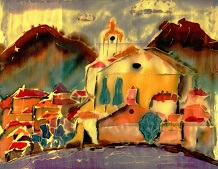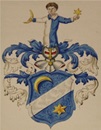 Safaris
Bergsteigen
Wandern
Inselwandern Weltweit
Safaris
Bergsteigen
Wandern
Inselwandern Weltweit
 Europa
Inselwandern
Europa
Inselwandern
 Städtewandern
Städtewandern
 Paintings
Paintings Dirk Rauschenbach
Dirk Rauschenbach
 Safaris
Bergsteigen
Wandern
Inselwandern Weltweit
Safaris
Bergsteigen
Wandern
Inselwandern Weltweit
|
 Europa
Inselwandern
Europa
Inselwandern
|
 Städtewandern
Städtewandern
|
 Paintings
Paintings |
 Dirk Rauschenbach
Dirk Rauschenbach
|
|
back Hamer zurück Äthiopien Back Ethiopia Hamer People Im Tal des Omo Hamarpeople Omo Valley
Stamm der Hamer. Die Frauen tragen Narben auf dem Rücken. Während des großen Festes des Rindersprunges ( Bullfighting ) lassen sie sich peitschen. Sie zeigen dadurch Stärke und wollen beweisen, dass sie auch in schlechten Zeiten immer an der Seite ihrer Familie stehen werden. Die frischen Narben wurden früher Wunden werden extra verunreinigt, um sie auch nach vielen Jahren noch zeigen zu können. Heute wird Salbe aufgetragen. dances of Ethiopia Tänze aus Äthiopen unter ethiotube.net
| Hamerpeople | Hamerpeople |
Frauen lassen sich mit einer Peitsche oder Rute schlagen. Die Frauen werden oft von ihren Ehemännern geschlagen und zeigen stolz ihre Narben, wie sie gelernt haben und glauben, dass dies ihre Aufgabe ist und eine gewisse Loyalität zu ihrem Stamm, ihren Ehemann und ihre Gemeinschaft.#hamer #tribe #omo #sudan #hamerpeolpe #hippiefamily #germany #morocco #troublemakermum #houses #egypt #education #historicalmap #iraq #littletroublemaker #flensburg #algeria #bigtroublemaker #berlin #syria #2girls1mum #barderup #jordan #mummylifestyle #instafood #iran #iloveit #food #saudiarabia #loveyoutothe
|
Author: Lydall, Jean Entry: Hamar cluster Description: language of the Hamar, Banna, Bashada Length: D Field: Ling Deadline: September 30, 2000 Hamar cluster (incl. Hamar, Banna, Bashada and Kara) People of √ Hamar, √ Banna and √ Bashada speak one language (here referred to as Hamar) with a few lexical differences. Self name respectively: hämar, bäna and bäshädaäpo (word/mouth/language). The √ Kara speak a dialect of Hamar which is an √ Omoticlanguage belonging to the Aroid group with √ Ari and √ Dime. Its speakers (around 30.000) live in South Omo between the √ Omo and √ Woito rift valleys, and practice a mixture of √ pastoralism, √ agriculture, apiculture (s. honey) and √ hunting. Hamar uses ten basic vowels falling into two corresponding categories. Category I vowels are open, unraised and pronounced with constricted pharynx, category II vowels are close (except for a), raised and pronounced with open pharynx. Hamar is a generic language in whichparticular forms of nouns, verbs, and quality words are derived from a general, nonspecific form. It is also a suffix language, modifiers taking the form of suffixes, and S(ubject)O(bject)V(erb) order is typical for simple declarative sentences. The following suffixes are attached to general form of nouns to produce particular forms: -a/-ta formasc. sing. or particular/small, -no/-tono for fem. sing. or global/large, -na for particularpl., -o for address sing., -nato for address pl., -mai for address intimate, -mo forindicating state, condition, quality of. The general form of pronouns can be modified by suffixes to form independent and dependent pronouns. The generic root of the verb is active, suffixes are used alone or in combination to produce derived roots: -äd forpassive/reflexive, -s/-t for causative/initiative, -ïm for progressive. Verb stems indicatingaspect are derived from verb roots as follows: root alone for immediate aspect, -a forperfect, -i for descriptive, -e for imperfect, -o for purposive. Relatives can be derivedfrom verb stems by adding noun suffixes. Verbal expressions combine verbal stems and roots with, or without, pronouns. Verbal negation involves raised and falling tone on last two vowels, e.g. känsáì (does not know) A small number of quality words may performas adjectives, adverbs, nouns or verbs. Ideophones form a large class of words which, unlike the other word classes, do not take on suffixes, but can be varied through reduplication and lengthening. Ideophones sum up states of affairs, mimic sounds, act as vocatives or are used as attitude markers. Sources: J. Lydall, 'Hamer' In: M.L. Bender (ed.) The Non-Semitic Languages of Ethiopia, Michigan1976, 393-438; J. Lydall 'Gender, Number, and Size in Hamar' In: M. Bechhaus-Gerst and F. Serzisko (eds.) Cushitic - Omotic. Papers from the International Symposium on Cushitic and Omotic Languages,Cologne, January 6-7, 1986 Hamburg 1988, 77-90. |
![]() 26.07.25 Copyright Dirk
Rauschenbach Koelnerstrasse 293 51702 Bergneustadt
Datenschutzerklaerung 02261 9788972 Mail ccooly(
at) web.de
26.07.25 Copyright Dirk
Rauschenbach Koelnerstrasse 293 51702 Bergneustadt
Datenschutzerklaerung 02261 9788972 Mail ccooly(
at) web.de